
Throughout the history of the motorcycle industry, many a good bike has been a commercial failure, and sometimes through no real fault of the machine itself. Often they were released when other styles of bikes were booming or a single competitor was simply dominating the market. Take the 2006 BMW R1200 ST, not only were superbike the machine du jour, the rival sports tourer Honda VFR a sales success, but BMW also put its own model up against two other sports tourers of their own. The odd-looking ST was doomed, but as Belarus-based Recast Moto has discovered, the BMW is a brilliant base, it just needs one seriously radical makeover to stand out, and shop owner Vadim Mulyarov has departed from the conservative design philosophy of the German manufacturer to something truly wild.
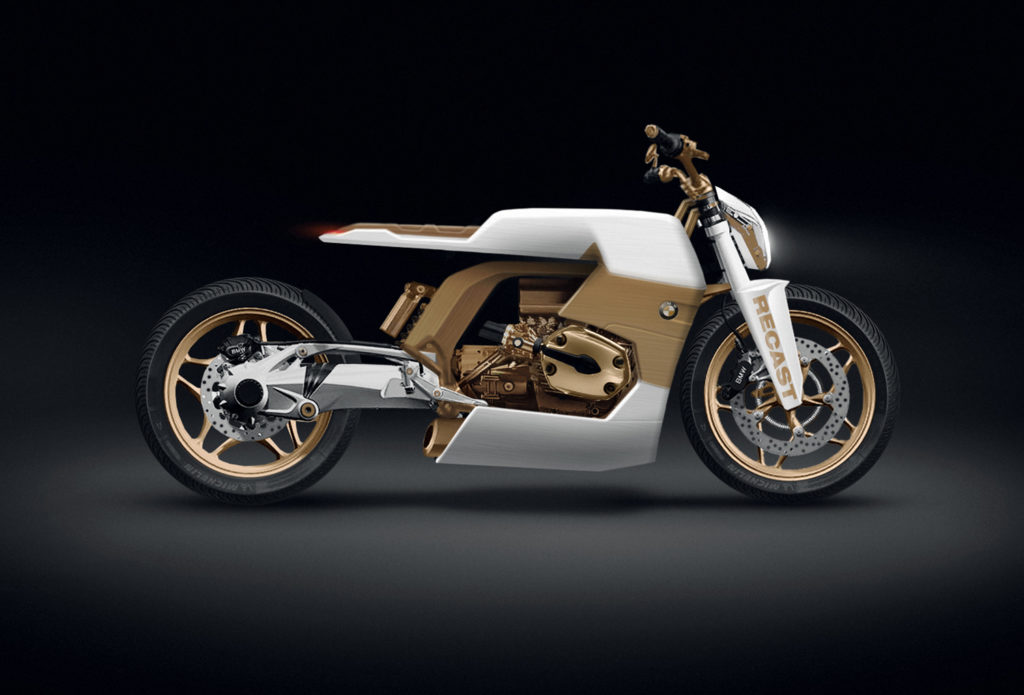
Operating in the capital, Minsk, Vadim has built a host of custom motorcycles that are shipped to all corners of the globe to a loyal fan base. Specialising in older BMW, Moto Guzzi and Japanese makes, he was keen on a different challenge. “The idea to build this project was born back in 2017. We were looking for a donor based on a BMW motorcycle. At that time, the R nineT model was gaining popularity. The budget did not allow us to build a motorcycle based on the R nineT, and there was not much point in changing the design of this model. I wanted something interesting and new that no one had done before. Our choice was an inexpensive donor R1200 ST.”
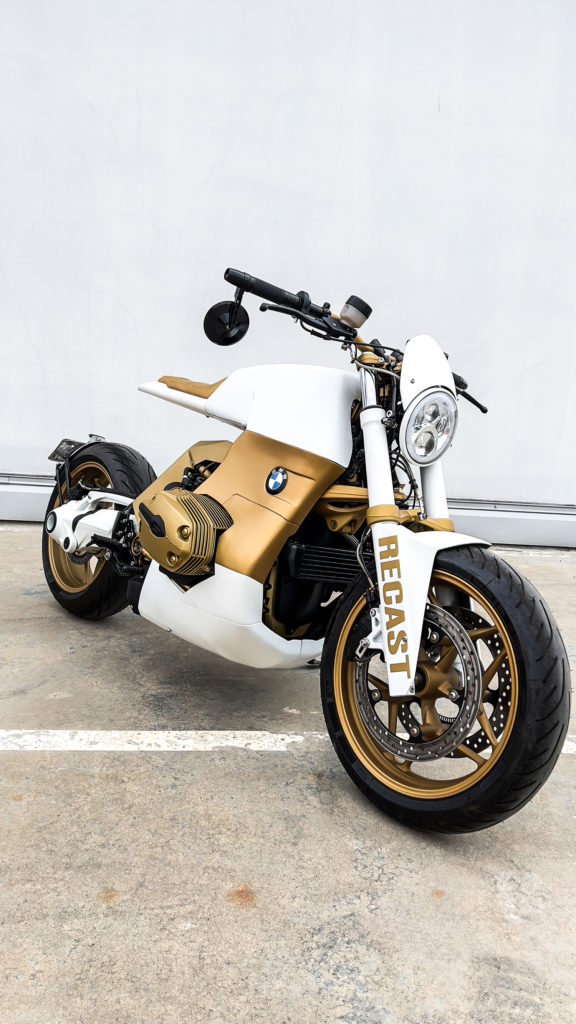
The ST poses a range of challenges for any builder, perhaps why very few have ever attempted to craft a custom from one before. The three-piece chassis with the engine as a stressed member, the highly complex electrical system and its array of components, as well as that of the ABS, and the unusual nature of the suspension at both ends. But there is also a lot to like, the handling is great, the reliability is typically German, and the boxer twin makes 110hp, even while dealing with a choking old three-way cat. What the BMW did need, however, was a total metamorphosis, from an ugly round duckling, into a sharp and edgy Samurai sword.
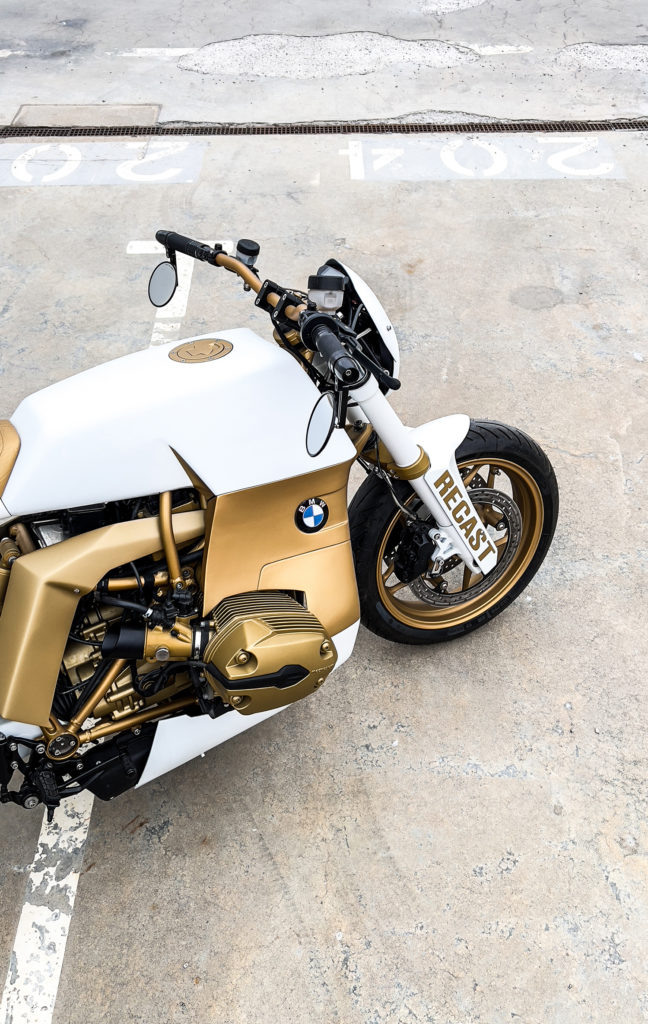
“I was inspired by the new ideas of Barbara Motorcycle (Photoshop design concepts). We drew out a sketch and a new story began to implement the plan. In this project, the main highlight was to make the gap between the top and bottom of the motorcycle as large as possible, while creating a futuristic silhouette of the motorcycle.” To get started the bike was stripped down, but with the multi-piece frame, there is no main chassis to work from, so the engine remains in place, with the top section and cradle trellis left, and the rear subframe thrown away.
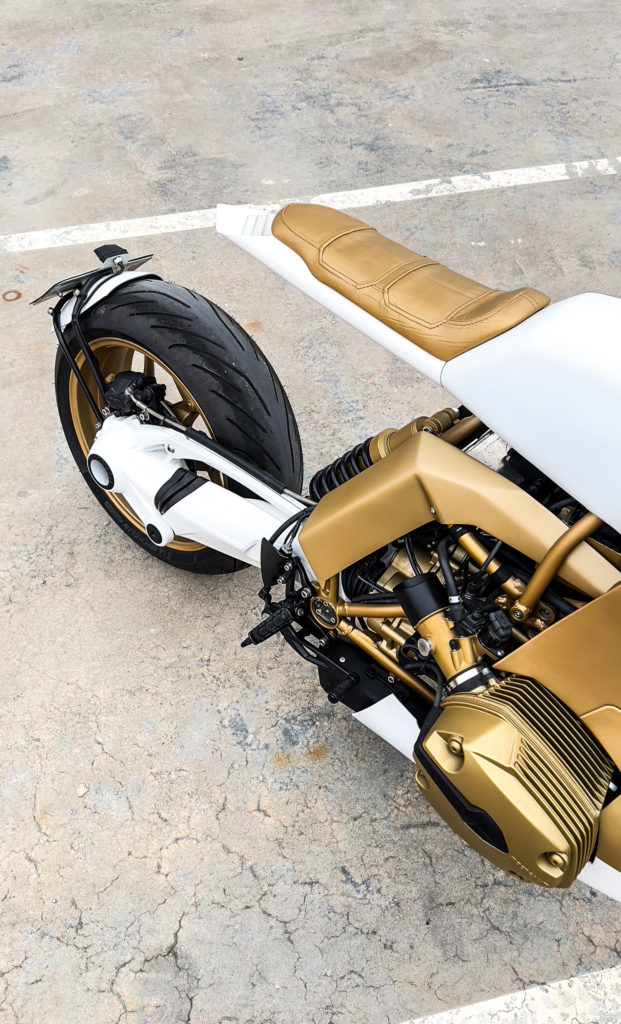
An all-new cantilever subframe extends from the upper sections of the engine cradle all the way out over the rear tyre, without a single piece of that supporting structure being visible, genius! The rest of the body is then lovingly and expertly crafted from 3mm aluminium, with the design loosely followed as Vadim worked, but concentrating on crafting shapes and lines that visually pleased the eye as they were laid down in the flesh. Where the stock bodywork was bulbous, the new look is sharp and sleek, the waist pinched in while the tank and belly pan form solid shapes.
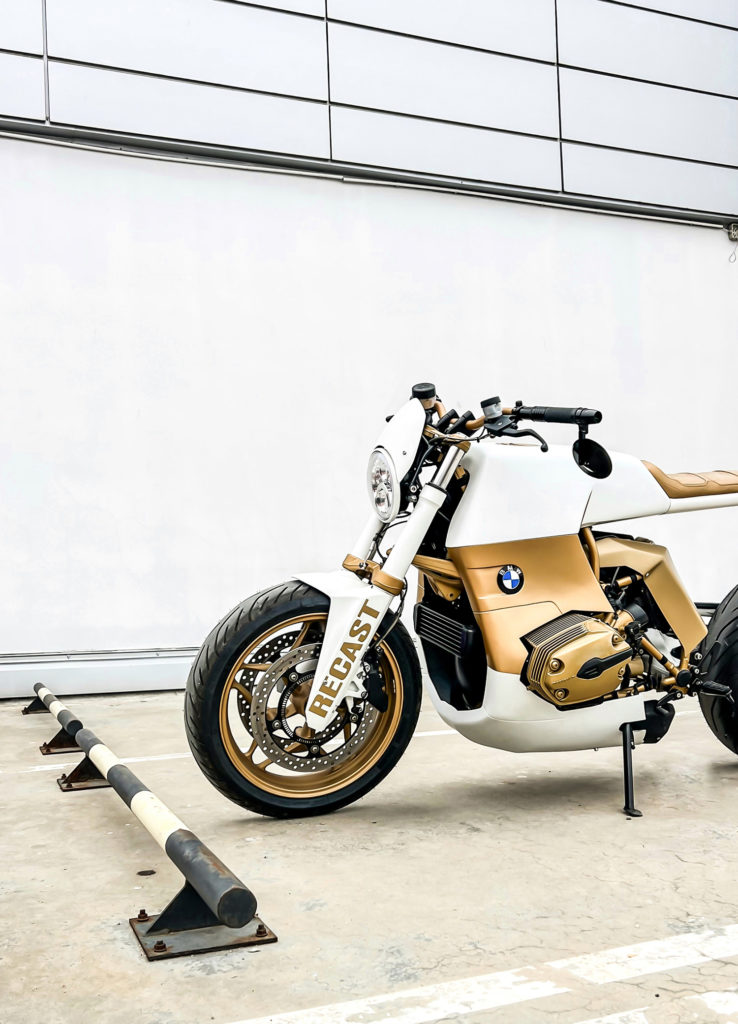
The front fender is perfectly moulded to double up as a set of integrated fork covers, with a minimalist cowl completing the front end. The rear is all about that tail section, floating out before forming a menacing sharp point to finish. The frame covers really help to bring the whole design together and create a neat finish as opposed to the stock bike’s messy look, and a Diavel-styled rear fender will keep the fun police in check. The stark white and gold were then expertly laid down, with the location of the colours chosen to further enhance the new lines, and the gold seat a bold touch.
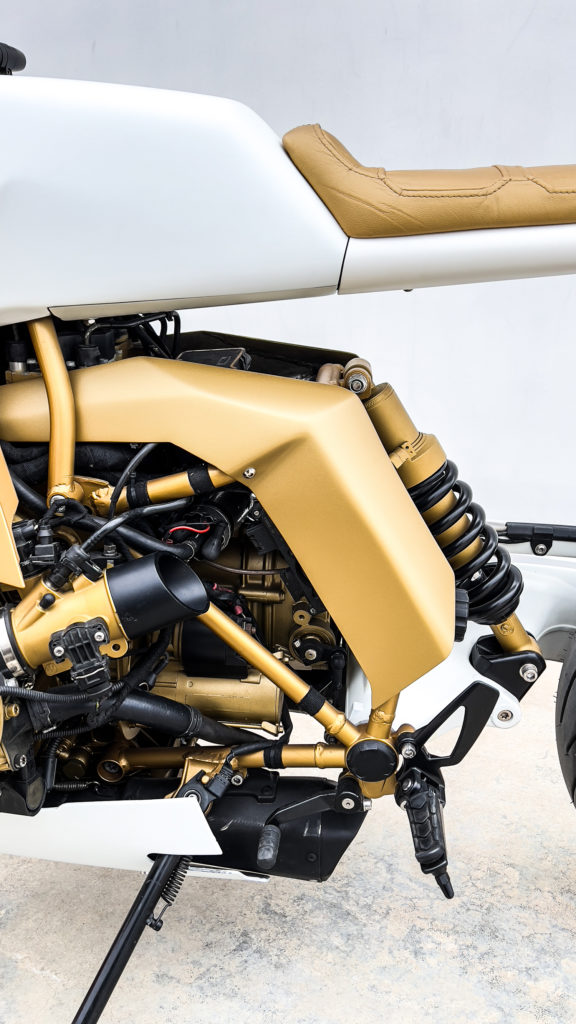
But the challenges didn’t stop there, Vadim might have conquered a cantilever subframe, but he still had to deal with BMW’s paralever and telelever suspension. They function exceptionally well, but the front end is particularly ugly. So, more white paint is used to cover the fork legs and the weird factory clip-ons are replaced by machining the upper clamp for risers and then slotting in a set of flat bars. The rear suspension uses a modified upper mount, to lay the fork slightly forward and it really shows off the stunning single-sided swingarm and wheel, now in body matching white and gold.
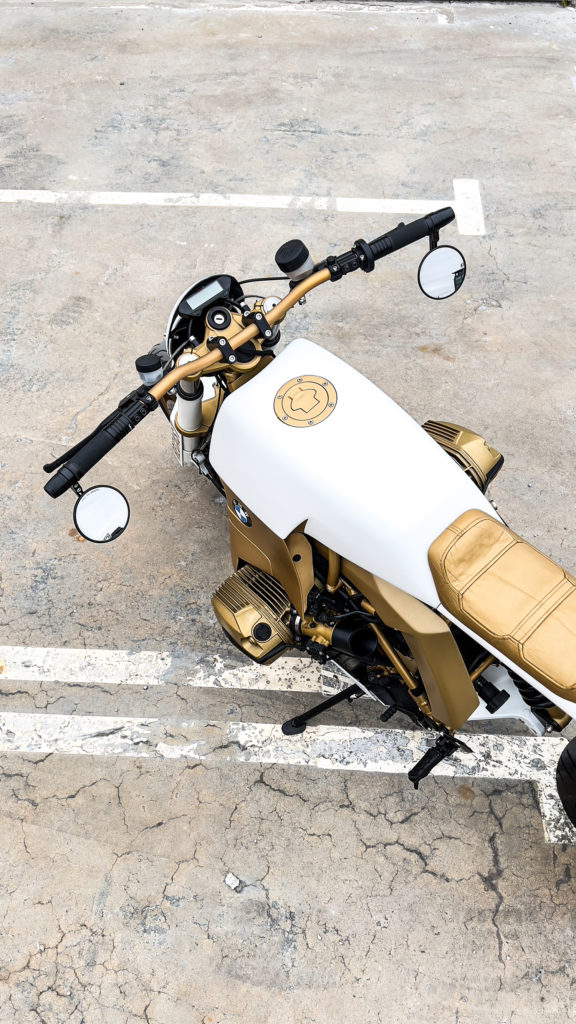
All the electrics have then been simplified, with Vadim opting to retain the advanced systems, but hide as much as he can, and use mini push buttons on the bars. LED lighting plays a role at each end, with the rear lights a real highlight and the dash changed to fit behind the cowl.
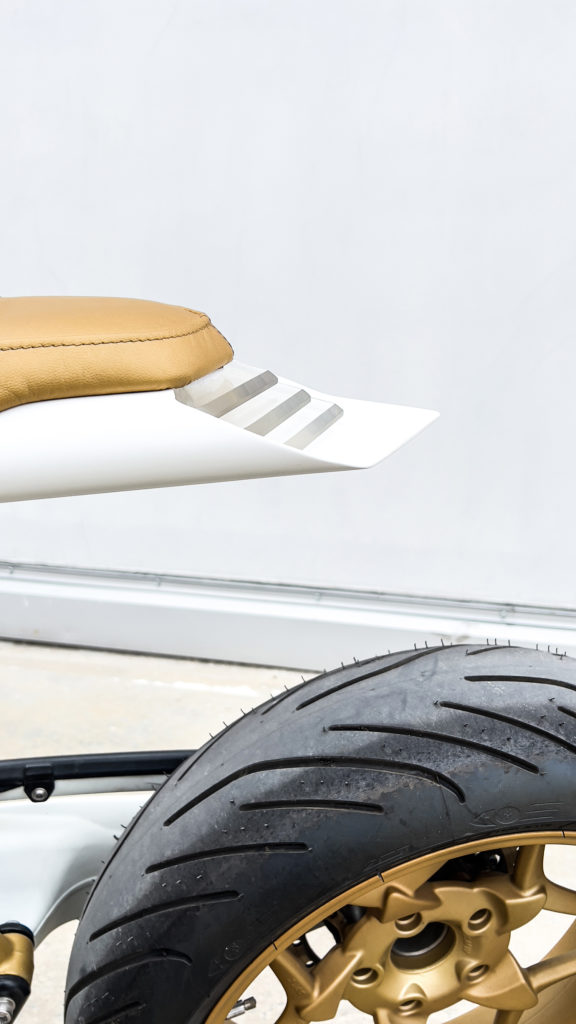
Now he just had one more task, rid the bike of that god-awful exhaust and unleash some more power. To do this, the airbox is gone and some ingenious internally filtered short inlet tracts get bolted on. For the exhaust, another Ducati trick is used with the whole system hidden under the bike, including the twin mufflers in black.
Five years have passed since the build commenced, “perhaps this idea is no longer so relevant today.” Vadim ponders, but we think he’s applied the Midas touch.
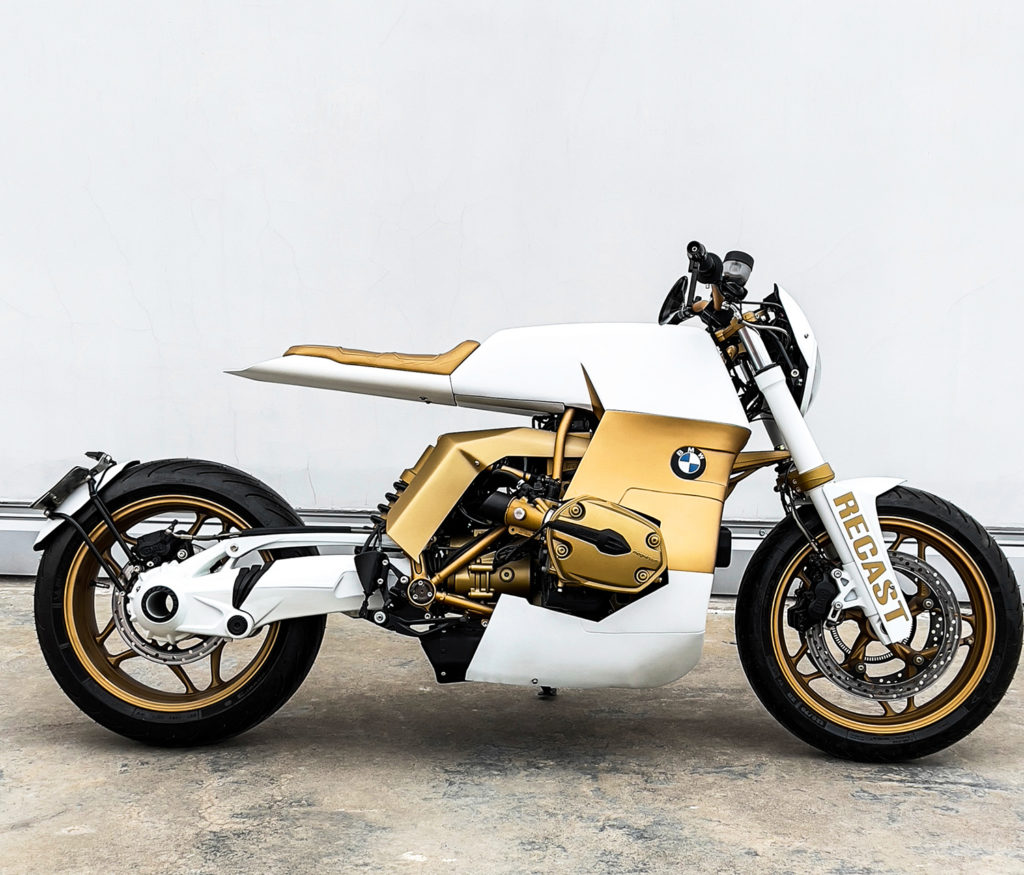
[ Recast Moto – Instagram ]

